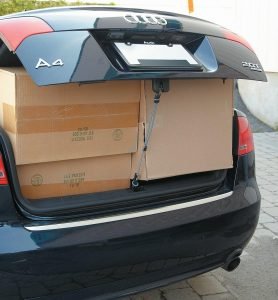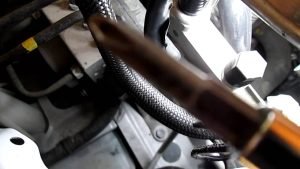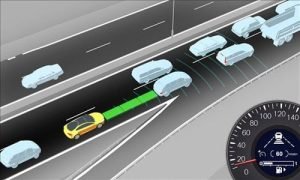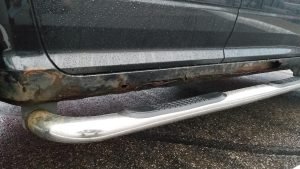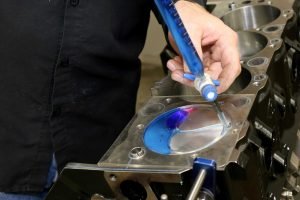To add a second battery to your truck, you can follow a few steps: select the appropriate battery, determine the suitable mounting location, connect the batteries in parallel using a battery isolator, and secure all connections properly to a ground point.
Contents
- Benefits Of Having A Second Battery
- Determine Your Power Requirements
- Types Of Batteries
- Assessing The Space And Mounting Location
- Wiring And Connections
- Installing A Battery Isolator Or Separator
- Regular Battery Maintenance
- Troubleshooting Common Issues
- Frequently Asked Questions For How To Add A Second Battery To Your Truck
- Conclusion
Benefits Of Having A Second Battery
Unlock the benefits of having a second battery for your truck by learning how to effortlessly add one. Maximize power for all your devices and accessories, ensuring reliability and convenience on the road.
Powering Additional Accessories
- Adding a second battery to your truck provides you with the capability to power additional accessories without putting a strain on your primary battery.
- By distributing the electrical load, you can ensure all your accessories receive a consistent power supply, preventing any issues with system failure or dimming lights.
- With a second battery, you can power accessories such as a winch, off-road lighting, air compressors, sound systems, or even a fridge for long trips, without worrying about draining your primary battery.
- The additional power source opens up a world of possibilities and allows you to customize your truck to meet your specific needs.
Ensuring A Reliable Power Source
- A second battery acts as a backup power source, providing a reliable and uninterrupted supply of energy to your truck’s essential systems.
- Having a secondary battery ensures that you won’t get stranded in remote locations or during long trips where access to electrical outlets may be limited.
- In cases where your primary battery fails, the second battery can be used to start your engine, eliminating the need for a jump-start.
- Whether you’re using your truck for work or off-roading adventures, having a reliable power source gives you peace of mind knowing you won’t encounter unexpected electrical failures.
Improving Battery Life
- Adding a second battery can extend the overall lifespan of your truck’s electrical system.
- By reducing the load on your primary battery, it can avoid excessive discharging and prolong its lifespan.
- With two batteries in parallel, they share the electrical load, allowing each battery to operate at a lower percentage of its overall capacity, minimizing wear and tear.
- This leads to improved battery performance and longevity, saving you money in the long run as you won’t have to replace batteries as frequently.
Remember, adding a second battery to your truck offers several benefits, including powering additional accessories, ensuring a reliable power source, and improving battery life. So, if you find yourself in need of extra power for your truck, consider investing in a second battery to enhance your vehicle’s capabilities.
Determine Your Power Requirements
Looking to add a second battery to your truck? Before doing so, it’s important to determine your power requirements to ensure a smooth installation process.
Calculating The Power Needs Of Your Accessories
Determining the power requirements for your truck’s accessories is crucial before adding a second battery. This will ensure that you choose an appropriate battery capacity that can handle the load. Here are a few steps to help you calculate your power needs:
- Identify your accessories: Make a list of all the electrical accessories you plan to power with the second battery. This can include things like auxiliary lighting, winches, refrigerators, compressors, audio systems, etc.
- Determine the power draw: Research the power draw or wattage specifications of each accessory. This information is usually available in the product documentation or online.
- Calculate the total power consumption: Add up the power draw of all the accessories you listed. This will give you the total power consumption in watts.
- Convert watts to ampere-hours: To determine the capacity of the battery you’ll need, you’ll need to convert the power consumption from watts to ampere-hours (Ah). To do this, divide the total power consumption by the voltage of your truck’s electrical system, usually 12 volts.
- Consider safety margins and future expansion: It’s a good idea to add a safety margin to account for potential power surges or new accessories you might add in the future. Aim for a battery capacity that is around 20-30% higher than your calculated ampere-hours.
- Choose the appropriate battery capacity: Based on your calculations and considering safety margins, select a second battery with the required capacity. This might involve getting a battery with higher ampere-hour rating or opting for a dual-battery system with both batteries working together.
By accurately determining your power requirements, you’ll be able to choose the right battery capacity for your truck’s accessories. This ensures that you have enough power to run all your electrical equipment without draining your primary battery or causing any performance issues.
Types Of Batteries
Looking to add a second battery to your truck? Discover the different types of batteries available to enhance your vehicle’s power and performance. Find out the best options for your specific needs and how to seamlessly incorporate a second battery into your truck’s electrical system.
When it comes to adding a second battery to your truck, you have several options to choose from. Each type of battery offers its own set of advantages and considerations. Let’s take a closer look at the different types of batteries you can consider:
Flooded Lead-Acid Batteries:
- Commonly used in automotive applications
- Affordable and widely available
- Require regular maintenance such as checking electrolyte levels and topping up with distilled water
- Can release harmful gas during charging, so ventilation is important
- May not be suitable for off-road or extreme conditions
Agm Batteries:
- Absorbent Glass Mat (AGM) technology provides a maintenance-free option
- Leak-proof and more resistant to vibration, making them suitable for off-road use
- Can be mounted in any position, offering more flexibility in installation
- Generally more expensive than flooded lead-acid batteries
- Ideal for applications where deep cycling and rapid recharging are required
Lithium-Ion Batteries:
- Lightweight and compact, making them suitable for tight spaces or weight-sensitive applications
- Longer lifespan compared to traditional lead-acid batteries
- Faster charging times and higher discharge rates
- More expensive upfront cost but may offer better long-term value due to longevity and performance
- Require specialized charging equipment and may have unique installation considerations
When considering a second battery for your truck, it’s important to evaluate your specific needs and preferences. Whether you prioritize cost-effectiveness, durability, or performance, there is a battery type that can meet your requirements. Conduct thorough research and consult with professionals to ensure you make an informed decision that suits your truck and usage patterns.

Credit: www.takethetruck.com
Assessing The Space And Mounting Location
Assessing the space and mounting location is essential when adding a second battery to your truck. Ensure there is enough room and choose a secure position for installation to optimize performance.
When it comes to adding a second battery to your truck, finding a suitable location is crucial. Not only do you want to ensure proper ventilation for the battery, but you also need to consider mounting stability. Here are a few factors to keep in mind when assessing the space and choosing a mounting location:
- Battery size and shape: Measure the dimensions of the second battery and determine its shape. This will help you identify the available spaces in your truck where it can fit without any issues.
- Under the hood: Look for any empty spaces or brackets under the hood that can accommodate the second battery. Ensure the location you choose allows for easy access and won’t interfere with other engine components.
- Bed or cargo area: If you have enough space in your truck’s bed or cargo area, you may consider mounting the second battery there. Make sure to secure it properly to prevent movement during off-road adventures.
- Battery tray or box: Consider using a battery tray or box specifically designed for mounting a second battery. These accessories provide stability and protection for the battery, reducing the risk of damage.
- Ventilation: Proper ventilation is crucial for maintaining the health and performance of your second battery. Look for a mounting location that allows for adequate airflow to prevent overheating.
- Cable length: Take into account the length of the cables connecting the batteries. The chosen location should be close enough to minimize the length of the cables while still allowing for easy installation and maintenance.
- Grounding: Ensure that the chosen mounting location provides a solid ground connection for the second battery. A good ground connection is essential for the electrical system’s proper functioning.
Now that you have an understanding of the factors to consider when assessing the space and mounting location for your second battery, you can confidently move on to the next steps of the installation process. Remember to prioritize safety, accessibility, and proper ventilation to ensure optimal performance and longevity of your truck’s dual battery setup.
Wiring And Connections
Learn how to seamlessly add a second battery to your truck’s wiring and connections, ensuring a smooth operation and reliable power supply while avoiding any common pitfalls.
Understanding The Electrical System Of Your Truck:
- The electrical system of your truck is responsible for powering various components, including the engine, lights, and accessories.
- It comprises a battery, alternator, fuses, and wiring that work together to provide electrical power.
- An understanding of the electrical system is crucial when adding a second battery to your truck.
Creating A Parallel Or Series Connection:
- When adding a second battery, you must decide whether to connect it in parallel or series.
- Parallel connection involves connecting the positive terminals of both batteries together and the negative terminals together.
- This configuration allows the batteries to work together, providing more power for your truck’s electrical needs.
- Series connection, on the other hand, requires connecting the positive terminal of one battery to the negative terminal of the other.
- This arrangement increases the voltage output while maintaining the capacity of a single battery.
Properly Connecting The Batteries To The Truck’S Electrical System:
- Start by ensuring that both batteries have matching voltages and capacities for optimal performance.
- Clean and inspect the battery terminals to remove any corrosion or debris before making the connections.
- Connect the positive terminal of the primary battery to the positive terminal of the second battery using a suitable cable.
- Similarly, connect the negative terminal of the primary battery to the negative terminal of the second battery.
- To prevent short circuits and ensure safety, use appropriate battery terminals and insulate the connections with heat shrink tubing.
- Once the batteries are connected, route the wiring to a suitable location in the truck, ensuring proper securing and protection from damage.
- Connect the positive and negative terminals of the second battery to the truck’s electrical system, such as the fuse box or other power distribution points.
- Double-check all connections, ensuring they are tight and secure to prevent any electrical issues.
Remember, understanding your truck’s electrical system, choosing the appropriate battery connection, and properly connecting the batteries to the truck’s electrical system are crucial steps when adding a second battery to your truck. Following these steps will ensure a safe and efficient power supply for your truck’s electrical needs.
Installing A Battery Isolator Or Separator
Discover the steps to successfully add a second battery to your truck by installing a battery isolator or separator. Improve your vehicle’s power supply for efficient performance on the road.
Function And Importance Of A Battery Isolator/Separator
Are you looking to add a second battery to your truck? One of the essential components you’ll need is a battery isolator or separator. These devices play a vital role in ensuring proper electrical distribution and preventing draining of your vehicle’s primary battery.
Let’s dive into the function and importance of a battery isolator/separator.
- Efficient power management: Battery isolators/separators create a separate electrical system for your second battery, allowing it to be charged without drawing power from the primary battery. This ensures that your primary battery remains fully charged for starting the engine and running essential vehicle components.
- Protection against power drain: With a battery isolator/separator in place, you won’t have to worry about your accessories or secondary devices draining your primary battery. The isolator/separator prevents power from being drawn from the primary battery, safeguarding its charge and ensuring reliable starting power.
- Maintenance of battery lifespan: By using a battery isolator/separator, you can extend the lifespan of both your primary and secondary batteries. The isolator/separator prevents overcharging and over-discharging, which are detrimental to battery health. This not only saves you money in the long run but also ensures your batteries are always in good condition.
Step-By-Step Installation Guide
Now that you understand the significance of a battery isolator/separator, let’s walk through the installation process. Follow these steps to add a battery isolator/separator to your truck:
- Gather the necessary tools and materials:
- Battery isolator/separator
- Wrench or socket set
- Wire cutters/strippers
- Electrical tape
- Ring terminals and connectors
- Mounting brackets (if required)
- Determine the mounting location:
- Choose a suitable location near the vehicle’s primary battery.
- Ensure there is enough space to mount the isolator/separator securely.
- Disconnect the negative terminal from the primary battery:
- Use a wrench or socket set to loosen and remove the negative terminal connector.
- Set the cable aside, ensuring it doesn’t make contact with any metal parts.
- Mount the battery isolator/separator:
- Securely fasten the isolator/separator using the appropriate mounting brackets.
- Ensure it is positioned in a way that allows for easy access and connection.
- Connect the primary battery to the isolator/separator:
- Attach a positive cable wire from the positive terminal of the primary battery to the input terminal on the isolator/separator.
- Use a ring terminal terminal connector and tighten securely.
- Connect the secondary battery to the isolator/separator:
- Attach a positive cable wire from the output terminal on the isolator/separator to the positive terminal of the secondary battery.
- Again, use a ring terminal connector for a secure connection.
- Connect the negative terminal of the primary battery:
- Reattach the negative terminal cable to its original location on the primary battery.
- Ensure it is tightened securely.
- Ensure proper grounding:
- Connect a grounding wire from the isolator/separator to a suitable grounding point on the vehicle’s frame.
- Use a ring terminal connector and tighten securely.
- Inspect all connections:
- Double-check that all connections are tight and secure.
- Wrap electrical tape around any exposed wire connections for added protection against moisture and corrosion.
- Test the system:
- Start the engine and verify that both batteries are charging properly.
- Check for any signs of electrical issues, such as dim headlights or weak accessory performance.
By following these steps, you can successfully install a battery isolator/separator in your truck. Enjoy the benefits of efficient power management and prolonged battery lifespan.
Remember, a properly installed battery isolator/separator is crucial for maintaining your truck’s electrical system and ensures reliable power supply for all your needs on the road.
Regular Battery Maintenance
Learn how to effectively add a second battery to your truck for regular battery maintenance. This simple step-by-step guide will help you optimize the power supply and keep your truck running smoothly.
Regular maintenance of your truck’s battery is essential to ensure optimal performance and longevity. By following these simple steps, you can keep your battery in top shape and avoid any potential issues down the line.
Checking Battery Voltage And Electrolyte Levels:
- To determine the health of your battery, regularly check its voltage. A healthy battery should read around 12.6 volts. Anything significantly lower may indicate a problem.
- Additionally, it’s important to inspect the electrolyte levels of your battery regularly, especially if you have a non-maintenance-free battery. Ensure that the electrolyte covers the battery plates to prevent damage and ensure efficient operation.
Cleaning Battery Terminals:
- Over time, battery terminals can accumulate corrosion, which can hinder proper electrical connections. Regularly cleaning the battery terminals can help maintain optimal performance. Here’s how:
- Start by disconnecting the negative (black) battery terminal followed by the positive (red) terminal.
- Using a mixture of baking soda and water, scrub the terminals with a wire brush to remove any corrosion or buildup.
- Rinse the terminals with clean water and dry them thoroughly before reconnecting.
Using Battery Chargers And Maintainers:
- Battery chargers and maintainers are essential tools for prolonging the life of your battery. Here are a few important points to keep in mind:
- Choose a charger or maintainer suitable for your battery type (e.g., lead-acid, AGM, gel).
- When charging, ensure that the charger is set to the correct voltage and amperage for your battery.
- Avoid overcharging as it can damage the battery. Use a smart charger or maintainer that automatically adjusts the charging rate.
- Regularly using a battery maintainer can help offset the natural discharge that occurs when the vehicle is not in use.
Regular battery maintenance is a small but crucial aspect of keeping your truck running smoothly. By checking the battery voltage and electrolyte levels, cleaning the terminals, and using the right chargers and maintainers, you can maximize your battery’s performance and extend its lifespan.
So roll up your sleeves, show your battery some love, and enjoy worry-free travels on the road.
Troubleshooting Common Issues
Learn how to troubleshoot common issues when adding a second battery to your truck. Discover step-by-step instructions and tips to ensure a seamless installation process.
Battery Draining Quickly
- Check for any electrical accessories that are left on when the truck is turned off, such as lights or radios.
- Inspect the battery terminals for corrosion and clean them if necessary.
- Ensure that the alternator is functioning properly and providing sufficient charge to the battery.
- Test the battery to see if it is holding a charge or if it needs to be replaced.
Difficulty Starting The Truck
- Check the battery voltage to ensure it is not low.
- Examine the battery cables for any signs of wear or corrosion and replace if necessary.
- Inspect the starter motor for any issues and have it tested if needed.
- Consider using a jump starter or battery booster to provide additional power when starting the truck.
Corrosion On Battery Terminals
- Clean the battery terminals using a mixture of baking soda and water or a dedicated battery terminal cleaner.
- Use a wire brush or terminal cleaner tool to remove any corrosion buildup.
- Apply a thin coat of dielectric grease to the terminals to prevent future corrosion.
- Consider using felt pads or battery terminal protectors to further protect against corrosion.
Remember, battery issues can be complex, and it’s always advisable to consult a professional if you’re unsure or if the problem persists. By troubleshooting these common issues, you can often resolve battery-related problems and enjoy a reliable and efficient truck.
Frequently Asked Questions For How To Add A Second Battery To Your Truck
How Do You Hook Up Two Batteries To A Truck?
To hook up two batteries to a truck, follow these steps: 1. Disconnect the negative terminal on the first battery. 2. Connect a jumper cable from the positive terminal of the first battery to the positive terminal of the second battery.
3. Connect the positive terminal of the first battery to the positive terminal of the truck’s starter solenoid or main power bus. 4. Reconnect the negative terminal on the first battery and start the truck to ensure both batteries are functioning properly.
Can You Hook Up A Second Battery To Alternator?
Yes, it is possible to connect a second battery to your alternator for additional power.
Do I Need A Bigger Alternator For Two Batteries?
Yes, you need a bigger alternator for two batteries because the increased power demand requires more charging capacity.
What Do I Need To Install A Second Battery?
To install a second battery, you need a few things: a compatible battery, battery cables, a battery tray or box, and basic tools.
Conclusion
Adding a second battery to your truck can greatly enhance its performance and reliability. With the increased dependence on electrical accessories like lights, winches, and audio systems, a second battery becomes essential. By following the right steps and using the proper equipment, you can successfully install a second battery in your truck.
Firstly, ensure you choose a suitable battery that matches your truck’s power requirements. Next, properly connect the batteries in parallel to avoid any imbalance or overload. Additionally, use quality cables and connectors for a secure and efficient connection. Furthermore, consider installing a battery isolator to prevent drain from one battery to the other.
Regularly check the condition and charge level of the batteries to ensure optimal performance. Overall, adding a second battery to your truck is a worthwhile investment that can enhance your vehicle’s capabilities and provide peace of mind during off-road adventures.
Affiliate Disclosure: As an Amazon Associate, I earn from qualifying purchases made through links on this site.

